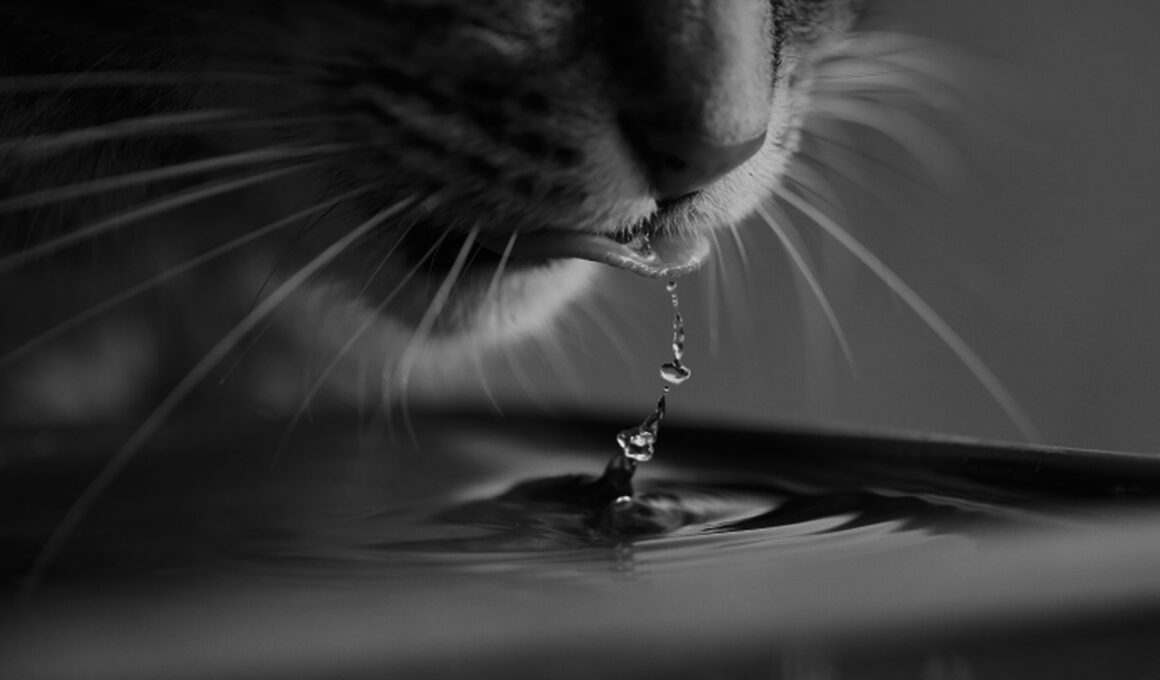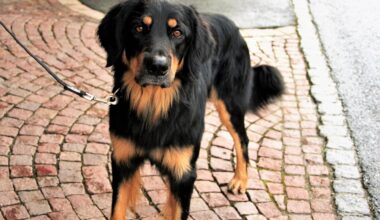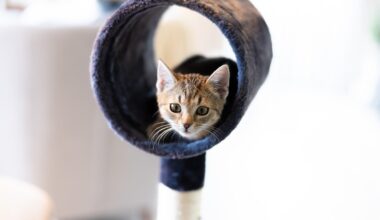DIY Hydration Solutions for Senior Cats
As cats age, their hydration needs change significantly. Senior cats are often more prone to dehydration due to various factors, such as reduced thirst drive or dental issues affecting their ability to drink water. Monitoring your senior cat’s hydration is crucial for maintaining their overall health and well-being. Dehydration can lead to serious health concerns like kidney disease and urinary tract issues. As a loving cat owner, ensuring your furry friend stays hydrated involves a few simple DIY solutions that can help encourage fluid intake. If your senior cat doesn’t seem interested in drinking water, creative methods can ignite their interest. In this article, we will explore numerous techniques that can aid in effectively monitoring and actively promoting hydration in older cats. These methods are practical and fairly easy to implement, even within the comfort of your own home. Let’s dive into the various hydration solutions that can benefit your cherished aging feline companion, ensuring they receive the necessary liquid sustenance they need for optimal health in their golden years.
One of the simplest DIY hydration solutions involves incorporating wet food into your senior cat’s diet. Cats are naturally inclined to obtain moisture from their food, making this method highly effective. Start by choosing high-quality wet cat food with a moisture content of at least 75%. Look for options that are soft and easy for senior cats to consume, especially if they may have dental issues. Additionally, mix wet food with some water or low-sodium broth to create a thicker gravy-like consistency, enhancing the deliciousness and ensuring your cat consumes more fluids during mealtime. If your senior cat is resistant to change, gradually introduce wet food mixed with their current dry food. This slow transition often helps maintain their familiarity with flavors. Maintaining a consistent feeding schedule aids in monitoring how much moisture your cat is ingesting. Ensure you also provide fresh air-dried food as an option. This ensures a variety of flavours are available and prevents boredom in their daily diet, which may also enhance their hydration levels.
Water Fountain Advantages
Using a cat water fountain can also be a beneficial DIY tool for encouraging hydration in senior cats. Cats are much more inclined to drink moving water than stagnant water. Water fountains simulate the flowing water that appeals to their instincts, enticing them to drink more often. They provide a continuous source of fresh water and can be equipped with filters to ensure cleanliness, ensuring your cat always has access to pure water. Choose a fountain specifically designed for cats, with a quiet pump to minimize disturbance. Ensure that the fountain is easy to clean and requires minimal maintenance. A water fountain encourages healthy drinking habits, which are essential for complex kidney functions in older cats. Most models come in various designs, allowing you to select one that complements your home decor. Furthermore, they often have replaceable filters, which can significantly reduce the likelihood of bacteria growth, ensuring that your cat enjoys the healthiest drinking experience possible. Keep the water fountain filled and clean to reinforce its use and building a positive hydration routine.
Another effective hydration solution involves adding flavor to your senior cat’s drinking water. Many cats are more enthusiastic about fluids when they have extra appeal. Simply adding low-sodium chicken or beef broth can create a more enticing drink. Utilize store-bought options, but ensure they are free of onions, garlic, and preservatives harmful to cats. Mix a small amount with fresh, cool water to stimulate their interest. You might also consider trying bone broth, which is not only flavorful but also provides additional nutrients and hydration. You can prepare homemade broths by boiling bones together with water for an extended period, then strain it to remove any solids before serving. Consider using ice cubes made of broth to add a frozen treat to their water bowls, especially in warm weather. Alternating flavors in their drinking water can keep things exciting and help theme their overall water consumption. Experiment with various broths until you find the best flavors that capture your cat’s preference and motivate them to drink more fluid.
Hydration Monitoring Methods
Monitoring your senior cat’s hydration levels is important to catch possible dehydration signals early. You can implement several practical methods, observing their drinking habits, and assessing their body condition for warning signs. Regularly observe the amount of water consumed daily, which should ideally be between 3.5 to 4.5 ounces per 5 pounds of body weight. Keep note of changes in consumption and note any refusals to drink. Another effective monitoring method is checking the skin elasticity. Gently pull up the skin at the nape of the neck; it should return promptly to its original position. If the skin stays lifted, this can indicate dehydration. Additionally, be aware of more specific signs of dehydration, like a dry or sticky mouth, lethargy, or a decrease in urine output. Once you identify any of these signs, consider seeking veterinary advice. By incorporating these methods into your daily routine, you’ll be better equipped to address your senior cat’s hydration needs quickly, ensuring a long, healthy life.
Experimenting with ice cubes made from fluid sources is another fun DIY hydration strategy. Cats often enjoy the freshness and stimulation that ice cubes provide, making the process of drinking water more attractive. Simply fill an ice cube tray with broth, flavored water, or even natural fruit juices like watermelon or blueberry (ensure these are safe for cats). Once frozen, drop a couple of cubes into their water bowl or place a dish with ice cubes nearby for them to explore. For many cats, the enjoyment of pawing at these ice cubes or licking them is a fun way to stimulate gentle hydration efforts. Ensure that any flavors or ingredients are safe for pets, checking that there are no harmful additives in the fruit juices used. Monitor how your senior cat interact with the ice cubes, and consider turning this into a daily ritual. This will not only encourage them to become more invested in their hydration, but it will also add some enjoyment to their routine, helping their overall lifestyle.
Hydration and Play
Combining playtime with hydration habits can be an innovative way to keep your senior cat drinking more water. Engage your cat in interactive play using wand toys or laser pointers while guiding them toward their water source. This physical activity can make them thirsty, encouraging drinking afterward. You can also incorporate water-themed activities into your play, such as using toys that float or soaking them beforehand to entice cats to bat at the water. Plan these sessions around their scheduled feeding times, making sure that hydration is a fun event. Tailor your approach to the play style of your cat, taking into account any mobility issues they may be facing due to age. Enriching the environment can stimulate mental alertness while promoting hydration. Moreover, craft cat toys that contain water as part of their structure or even create water bowls in coordination with their favorite resting spots, giving them a fun way to retain interest while hydrating. Experimenting with engaging activities and dedicated playtime can create routines that foster consistent drinking behaviors in senior cats.
Creating a designated hydration station around the home can further reinforce positive hydration practices in your senior cat. This hydration station should consist of multiple water bowls placed in areas where your cat frequently spends time. Ensure they are shallow enough for easy access while being made from cat-safe materials like glass or ceramic. Use at least two or three water stations throughout your house, as it is important for senior cats to have fewer obstacles for hydration. This will encourage exploration and frequent drinking during the day. Consider incorporating decorative elements like filtered water fountains or bowls with unique designs to capture their attention and blend with your décor. To make it exciting, routinely change the water and clean the bowls regularly, which promotes freshness and keeps your cats engaged. Invest in cat hydration aids like water-monitoring systems where you can accurately gauge how much water they are drinking. By implementing these methods consistently, you help your senior cat maintain optimal hydration while promoting a healthier lifestyle overall, reflecting your commitment to their health.


